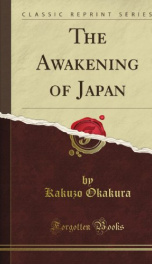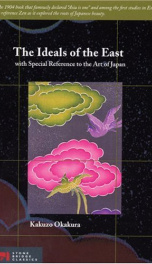the awakening of japan

Okakura-Kakuzo, the author of this work and of " The Ideals of the East," was born in the year I860. Having been, as he has said, " from early youth fond of old things," after leaving college in 1880 he interested himself in the formation of clubs and societies for archaeological research. The Japanese Renaissance, begun at the end of the eighteenth century, suffered a brief check during the civil commotion following the opening of the country after the arrival of the American Commodore Perry. The work of Okakura was a resumption of that begun by the earlier scholars.In 1886 this scholarly young enthusiast was sent to America and Europe as a commissioner to report on Western art education. On returning, he organ-ixTable of Contents Prefaceix; Chapter I The Night of Asia; The sudden development of Japan an eoigma to foreign observers-Asia the true source of Japan's inspiration- While Christendom struggled with medievalism the Buddhaland was a garden of culture-Effect of Islam npon Asia-The Mongol outburst destroyed Asia's unity -The condition of China and India-Japan never con-aucrcd, but buried alive for nearly £70 yearsS; Chapter II The Chrysalis; Japan under the Tokngawa sbognnntc-Iycyasu's influence-The Mikado's palace the "Forbidden Interior"- The kuges, or court aristocracy-The daimios-The samurai, or Bworded gentry - The commoners: farmer*), artisans, and traders - Tho outcasts-The nation in a pleasant slumbera; Chaiter III Buddhism and Confucianism; Buddhism and Confuciaoism never interfered in matters of state - Despite its temples and monasteries, Japan has no church-Neo-Confucianism$3; Chapter IV The Voice from Within; Three schools of thought united in causing the regeneration of Japan - First, the KognJcu, or School of Classical Learning-- Second, the School of Oyoroei - Third, the Historical School ,TO; V; Chapter V The White Disaster; The advent of the West not an unmixed bl
Info about the book
Author:
Series:
Unknown
ASIN:
B002WU0TFW
Rating:
4/5 (2)Your rating:
0/5
Languge:
English
Users who have this book
Users who want this book
What readers are saying
What do you think? Write your own comment on this book!
write a commentGenre
if you like the awakening of japan try:
Other books by this author
Do you want to read a book that interests you? It’s EASY!
Create an account and send a request for reading to other users on the Webpage of the book!



